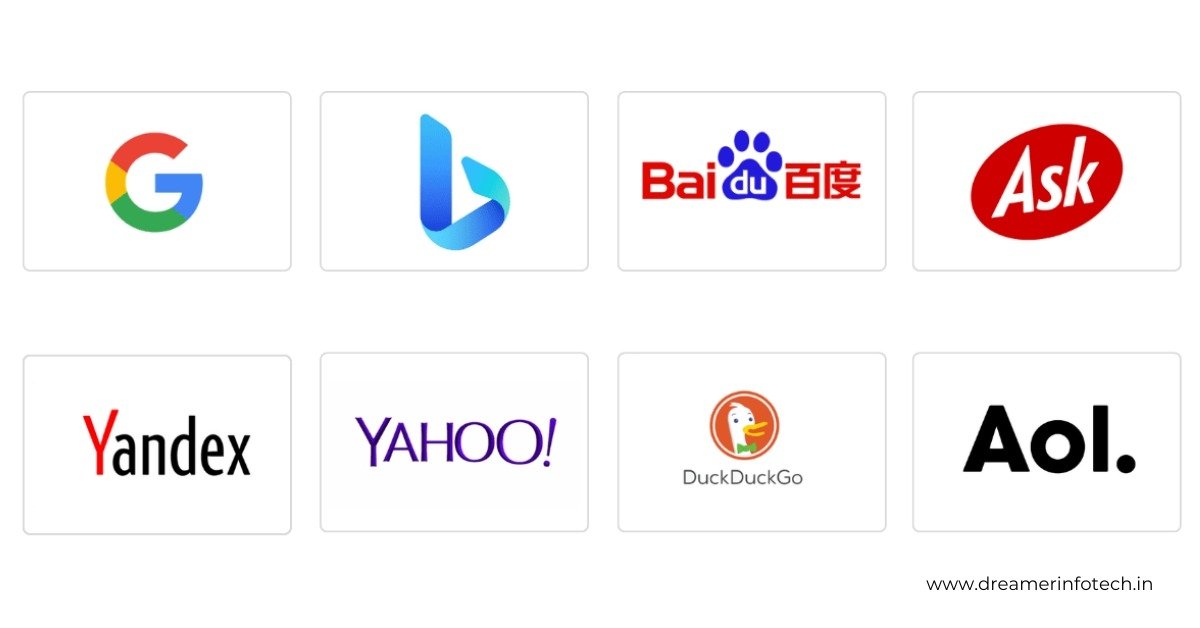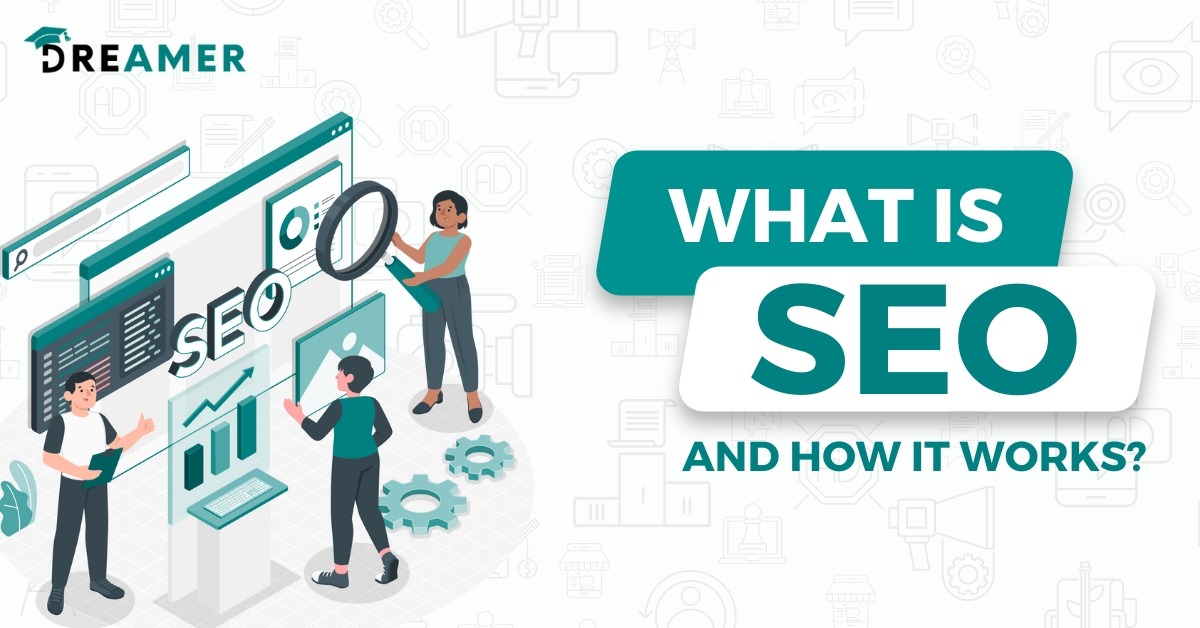What is SEO and How Does it work?
Everyone who wants to succeed online must study SEO. SEO isn’t simply a buzzword. This powerful strategy can help Google and other search engines find your website easier. If you understand SEO, you can improve your internet presence, attract more free traffic, and succeed. This guide covers what is SEO and how does it work. Read on for proven SEO tips to boost your website’s ranking, improve user experience, and achieve your digital marketing goals. Ready to study SEO? Start immediately.
SEO combines on-page and off-page optimization approaches to make your website more relevant, authoritative, and usable. Making your website’s HTML code, structure, and content more search-engine friendly is known as on-page SEO. After reading the whole blog if you still want to learn more then you can opt Digital Marketing Institute in Faridabad which physically teaches these courses.
Learning SEO Basics
This is the greatest way to understand SEO and its operation. SEO improves a website for search engines. The idea is to increase website views when people search for relevant keywords. These on-page and off-page strategies improve website usability and trust.
Knowing how search engines work is essential for SEO. Quality, usefulness, and user experience affect how Google and other search engines rank websites. Search engines will rank websites higher if they meet these guidelines. However, these scoring elements explain SEO and its operation. These characteristics can then inform your website change.
What is SEO?
- The practice of progressing an online site to progress its positioning on Search Engine Results Pages (SERPs) is known as SEO or Search Engine Optimization.
- SEO employments a variety of approaches and methodologies to extend your website’s visibility on search engine result pages.
- The most important objective of SEO is to extend your website’s organic traffic, that is, traffic that comes from search engine results pages instead of paid advertisements.
- In expansion to optimizing a website’s structure, content, and keywords, SEO incorporates making high-quality backlinks and quickening websites.
- To maintain success, SEO is a continuous process that needs regular maintenance and improvement.
- Increased website traffic, better brand visibility, enhanced search engine rankings, and increased trust and authority in your business or specialty are some of the major advantages of SEO.
- Numerous measures, including organic traffic, keyword ranks, backlink profiles, and conversion rates, are used to assess the performance of an SEO effort.
- To be successful within the SEO space, you wish to remain up to date with the most recent best practices and patterns.
- The procedures and strategies utilized in SEO change according to the one-of-a-kind needs and objectives of each site. There’s no one-size-fits-all strategy.
How do Search Engines Work?

Search engines like Google employ sophisticated algorithms to crawl and index billions of online pages, selecting which pages to display in search results based on criteria like content quality, relevancy, and authority. The essential phases that search engines go through are listed below:
1. Crawling: To search the web and find new pages, search engines utilize automated programs known as spiders or bots.
By following links from one website to the next, these applications build a list of web pages that search engines can use to return search results.
2. Indexing: When an unused web page is found, search engines look at its structure and content and rank it by theme and significance.
A search engine’s list (an expansive collection of web pages that can be utilized to supply search results) contains this information.
3. Positioning: When a client submits a search inquiry, the search engine analyzes the query and returns the foremost significant results.
A user’s search history, user area, and web page content are considered by search engines when assessing significance.
Search engines display search comes about in arrange of significance, with the foremost significant results at the best of the page.
Search engines rank websites based on different characteristics such as content quality, significance, backlinks, and client involvement. You’ll increment your website’s rating in search results and drive more guests to it by optimizing it for these characteristics.
How SEO Works?

SEO, or search engine optimization, works by progressing the visibility and positioning of your site on search engine results pages (SERPs). Here are the steps in how SEO works:
1. Keyword Research
Study keywords to understand what is SEO and how does it work. People use key phrases to find stuff via search engines. It’s crucial to utilize the proper wording to attract website visitors.
Searching for keywords requires numerous steps:
Finding Useful Keywords: First, consider content or business-related keywords. Using Google Keyword Planner, SEMrush, or Ahrefs, find keywords with lots of hits but little competition. However, add them to your list.
Looking at search intent: Determine the keywords’ meaning. Do individuals want to learn, buy, or acquire services? Your content must match searchers’ needs for SEO.
Looking at Others: Please find out how hard it is to get those terms. You may need help to rank for competitive keywords, so focus on long-tail, more precise, but less competitive keywords.
2. On-page Optimization
On-page optimization is another aspect of SEO. You do stuff on your website to boost its search engine rankings. However, this aspect of SEO improves page visibility in search results by improving them.
These are key on-page SEO elements:
Title Tags: The title tag is crucial to on-page SEO. It must be simple, contain essential words, and be intriguing enough to click on. SEO articles may have topic tags like “understanding what is SEO and how does it work a comprehensive guide.”
Meta Description: The meta description is a brief statement that describes the page in search results. So, it must be succinct, use common terms, and have a clear call to action to get clicks.
Text underneath headers: H1, H2, H3, etc. tags organize and simplify content. So, well-written headers assist search engines in understanding your content.
Information improvement: Write keyword-rich, informative material. Use keywords sparingly and strategically. Good content that answers questions and provides value is key to “what is SEO and how does it work?”
Image changes: File names and alt text help maximize photo use. However, this improves SEO and makes the site more accessible.
On-page optimization makes websites easier to use, which directly affects their SEO. Knowing these things is the best way to answer “What is SEO, and How Does it Work?”
3. Off-page optimization
What is SEO and how does it work have on-page and off-page aspects. Off-page SEO is everything you do outside your website to boost its search rankings. However, building links is the most significant off-page SEO strategy.
Combining Links: Other websites link to yours as backlinks. These links inform search engines that your material is trustworthy and useful. So, the quality and quantity of backlinks on your site can affect its rank.
Social media participation: Social media signs don’t directly affect results, but they can boost SEO by attracting more customers and promoting a brand. So, more people may view your social media posts and hyperlinks.
Online Reputation Management: Watching what people say, review, and comment on your business helps you control your online image. However, your site appears more trustworthy and authoritative when credible sources review and discuss it.
What is SEO and how does it work, you also know that off-page variables boost organic traffic and site image.
4. Technical SEO
What is SEO and how does it work, this involves making back-end changes to your website to improve performance and search engine crawlability. Technical SEO helps search engines crawl and assess your site. So, this is crucial for top search rankings.
Site speed: People and search engines care about page load time. Search engines appreciate fast-loading pages because they benefit visitors. Consider using Google Page Speed Insights to speed up your site.
Mobile-Friendliness: Since more people use phones, a mobile-friendly website is crucial. Your website must adapt to run on all devices.
Site construction: Well-organized websites are easier for search engines to crawl and scan. A sitemap, easy navigation, and sensible categories can improve your site’s appearance.
The SSL cert: Users and search engines value safety. An SSL certificate (HTTPS) can help secure data and make your site safer, improving your search results.
Basic SEO focuses on on-site components that work and help search engines identify them. Learn these concepts before answering what is SEO and how does it work.
5. Content Creation
What you write is the most important part of any SEO plan. This will help people find your website and bring them to it for free. Make sure the information is good, useful, and interesting. However, planning, making, and managing content that fits your business goals and your audience’s wants is all part of a good SEO content strategy.
First, look over the text to see where there are holes and ways to improve it. To achieve SEO goals, you must know what content your target likes. Content could be videos, podcasts, blogs, or slideshows. Make sure your writing is keyword-rich, useful, and engaging. Content should be useful and accomplish its purpose.
You could also include a mix of materials that will always be useful and those that are new. On the other hand, content that is relevant to current events or trends can help your site get steady traffic over time. Topical content, on the other hand, can bring a lot of people to your site right away. However, a good content plan also includes keeping material up to date and using it again and again. Constantly adding new content keeps your website fresh.
So, SEO and strong content can make your site more trustworthy, keep visitors longer, and boost search engine rankings.
6. Analytics and Tracking:
Finally, to grasp SEO and how it Works, you must constantly monitor and think about it. You must repeat certain steps for SEO to work. There will need to be more.
Google tracking ID: This tool shows you where your website’s visitors come from, what they do, and how many buy something. This information helps you decide what to keep and modify.
Get Google Search Console: This tool displays your site’s Google search results. How, it alerts you to indexing, search questions, and slow site issues.
SEO writing: Track your SEO results to see how effectively your techniques work. So, keyword results, organic traffic, and backlink growth indicate performance.
So, by monitoring and analyzing your efforts, you can increase your SEO and maintain high search engine rankings.
Conclusion
What is SEO and how does it work know this to increase your internet visibility. SEO requires keyword research, page optimization, technical SEO, and constant monitoring. By mastering these skills, people and businesses can increase website visibility, relevant traffic, and online goals. So, you must understand SEO to maximize its benefits and succeed online.
SEO could be a complex and ever-changing field, but it’s imperative to keep in mind that the extreme objective is to show clients high-quality, useful, and curious content. By focusing on creating content that resounds along with your target audience, you’ll be able to increase your website’s significance, authority, and ease of use to meet your digital marketing objectives. For deeper knowledge about this topic you can explore more on our website “career in digital marketing”.
Want to boost your SEO skills, here we are providing the best Digital Marketing Course in Faridabad.

